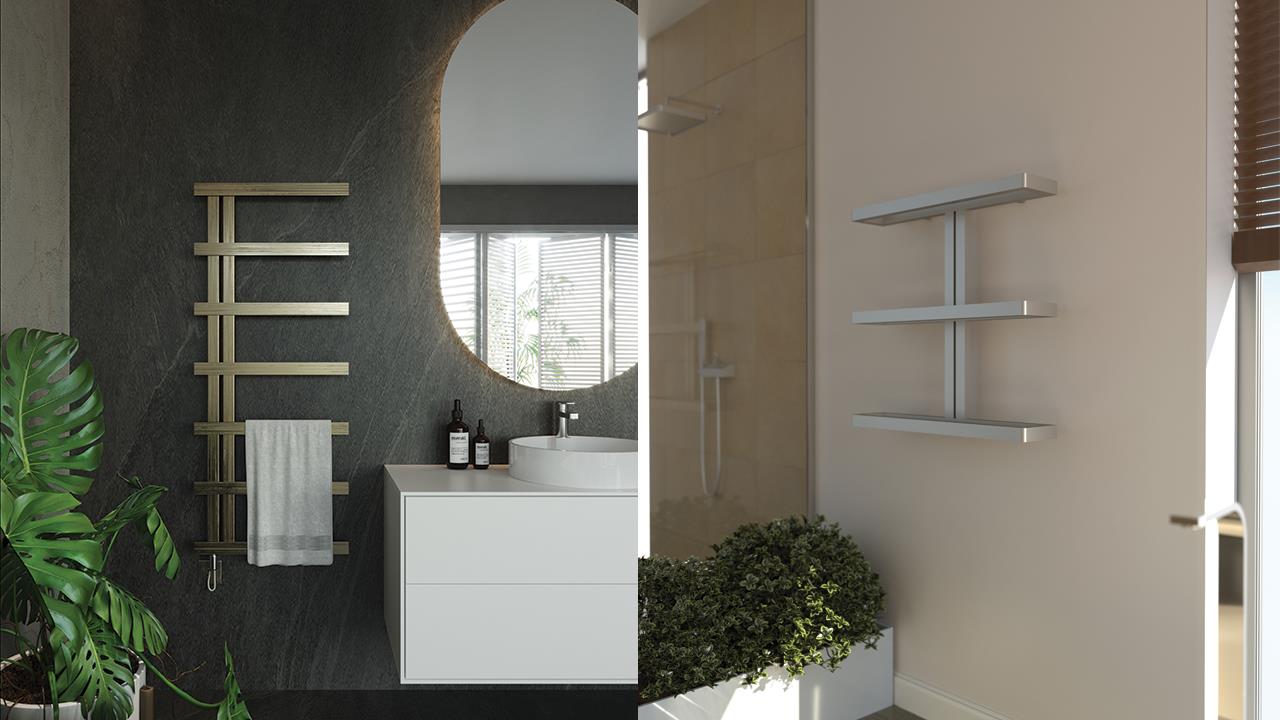

Saffet Kalender, Director of AEON by Pitacs, explains why it’s worth encouraging customers to put bit more thought into their choice of towel rail.
The bathroom and the kitchen are the first two areas many homeowners look to improve when they purchase a new home. They expect this investment to enhance their experience, but also the value when they choose to sell. However, there seems to be a curious disconnect in mindset when it comes to investing in more aesthetic bathroom elements, and spending money on a bathroom radiator or heated towel rail.
Let’s say a dream bathroom design revolves around a certain choice of designer wall tile; the consumer may look to offset the cost of the tiles against other elements, and often the towel rail falls into this category. But is the towel rail really a sensible place to cut costs?
The decision to purchase a heated towel rail balances between price and aesthetic. However, once installed, the customer will almost certainly focus on its performance. After all, it’s going to be a very functional part of the luxurious environment they are trying to create, warming those towels – and the room itself – for each use.
The design and shape of a towel rail has a significant impact on heat output and efficiency. Tube-in-tube designs are important when trying to maximise efficiency; crafting round tubes inside larger, square outer tubes increases the wet surface area by about 40%, which increases the output by almost that much as well. Or, to put it another way, the same output can be achieved with a radiator 40% smaller in size – ideal for a compact bathroom space that needs a high output.
A cheap towel rail will rarely feature a tube-in-tube design, as this feature does not affect the external view.
Next, consider the lifetime of the towel rail. Firstly, it is going to be mounted onto the wall. It’s going to cover – and most likely be drilled into – those very tiles that were prioritised in the budget. Sadly, with a low-price heating product, flaking and discolouration will almost certainly start to occur after a mere 18 months of use.
This deterioration usually begins near the valves and joints, as the process of painting or chrome plating over the highly ferrous metal underneath is not uniform in these areas, and thin spots allow moisture to penetrate through. Suddenly, the overall look of the bathroom is marred – the dirty appearance of the towel rail, especially in a room where we prize cleanliness, cannot just be ignored.
The item cannot be repaired, it will have to be replaced. Of course, removing it without causing damage– especially to those beautiful tiles – is not going to simple or cheap.
In comparison, a premium 304 grade stainless steel product won’t suffer flaking or discolouration, as the low iron content alloy will not corrode even in very damp conditions. Moreover, the ever-popular brushed finish which can be applied to stainless steel is very practical; the surface can be brought back to its original condition easily with fine abrasive paper, even after five years. These repairs can be carried out in-situ, so there’s no need to remove the rail and risk breakages.
Finally, and perhaps most importantly, heating apparatus should not just be dismissed at the planning stage as a boring, but necessary element of the bathroom, but embraced as a cohesive element of the overall design. A radiator or towel rail can – and should – be beautiful, enhancing a bathroom space, completing the design concept, and elevating the consumer’s experience of the room.
The market is now establishing great choices, with designs ranging from vintage-inspired to ultra-modern, and finishes in any RAL colour the customer chooses, as well as textures and wood effects.
Moreover, with new designs for fully electric towel rails being developed all the time, there is no longer a requirement to compromise the placement of your radiator or rail in deference to the existing plumbing.
If you'd like to keep up-to-date with the latest developments in the heating and plumbing industry, why not subscribe to our weekly newsletters? Just click the button below and you can ensure all the latest industry news and new product information lands in your inbox every week.